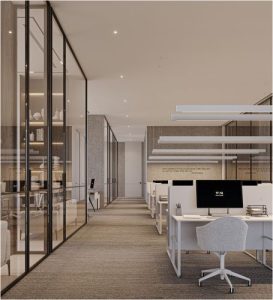Summer Ventilation Solutions: Designing Naturally Cool Spaces in Indian Heat

Ar. Sumit Dhawan,
India, being a tropical country, experiences harsh summers. This being an important aspect at times, leads to designing homes that beat the Indian heat. Architects today are seeking summer ventilation solutions that can mitigate the heat. From passive design strategies to traditional cooling methods, small changes can be used to naturally cool spaces. This reduces energy use and carbon emissions by lowering reliance on artificial cooling systems. These low-energy cooling techniques provide affordable options for residential buildings while also supporting sustainability objectives. Let’s explore designs that can naturally cool down the Indian heat.
Integrating Courtyards in Design
Drawing inspiration from the havelis of Rajasthan, modern architects are integrating indoor courtyards in their designs. These are quite helpful for ventilation and cooling the surrounding space. They trap cool air at the bottom and create a pocket of room for hot air to rise. More interior spaces can take advantage of the cooling benefits of a centrally located courtyard. This also leads to open layouts, fostering ventilation and cooling spaces naturally.
Opting for the Right Materials
Building materials that prevent heat transfer can significantly reduce the temperature of buildings. One of the solutions is a thatched roof, as they have air pockets, they offer good insulation and prolong the cooling of interior spaces. Additionally, unlike concrete, thatched roofs emit more heat rather than absorbing it. Stabilised mud bricks and terracotta tiles are two more materials that are suitable for hot Indian climes.
Using Waterbodies and Landscaping in Design
Integrating landscaping and waterbodies can cool down homes in summer while providing fresh air. In this outdoor transition space, for example, a well-sheltered water lily pond offers relief from the heat. Summertime increases in evaporation from water ponds cause the surroundings to chill. As they naturally release moisture, plants, trees, and bushes near windows and doors can help chill the air entering the house. Additionally, strategically placing small cascades can help in ventilation and beat the heat.
Jaalis and Perforations
Jaalis and perforations have long been a part of ancient architecture in India, facilitating ventilation. These are being reimagined in modern designs with innovations and style. Jaalis are used facade, crafted in limestone or sandstone, offering cool breezes inside. Moreover, with technology, these are being altered with dynamics and kinetics, adding to better ventilation solutions. Lastly, using louvres, vents, and open floor plans ensures unobstructed airflow. Stairwells, double-height spaces, and atriums can amplify the stack effect, pushing hot air upward and out of the building.
In the relentless Indian summer, architecture has the power to comfort, conserve, and coexist. As India urbanises and heats up, returning to this philosophy with a contemporary lens may be the most intelligent and humane way forward!
Ar. Sumit Dhawan is Founder and Principal Architect at Cityspace’82 Architects



1 Comment
TQ for sharing the valuable information regarding HVAC .. please keep sharing like this..
Chimney Caps For Sale